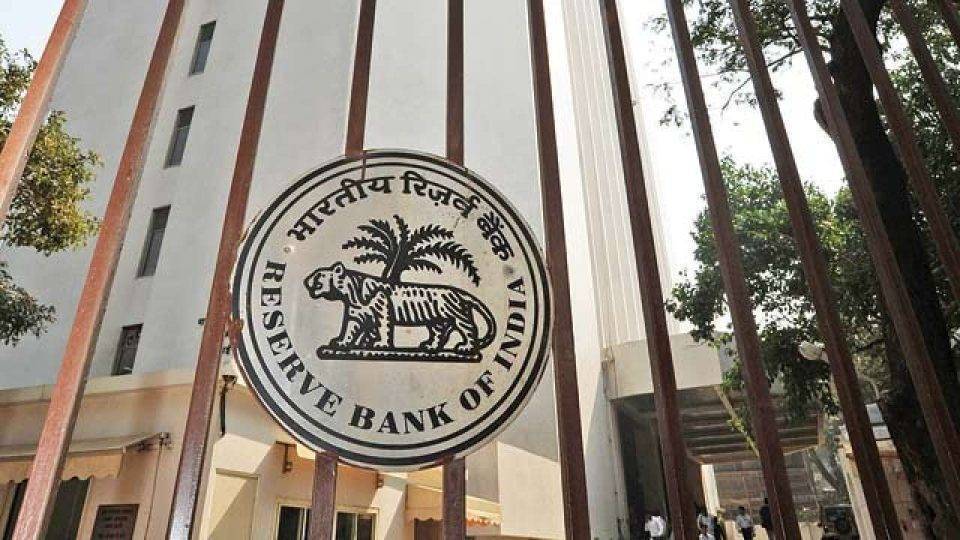The Reserve Bank of India (RBI), in its Monetary Policy Committee (MPC) meeting held between April 7 and 9, 2025, announced a 25 basis points cut in the repo rate, bringing it down from 6.25% to 6%. This marks the second consecutive rate cut by the central bank, following its previous move in February 2025, and comes as part of a broader strategy to support economic recovery amid global and domestic headwinds. In a significant shift, the RBI also changed its policy stance from 'neutral' to 'accommodative', signaling its readiness to adopt a more growth-supportive approach in the coming months. The decision to cut rates and change the stance was taken unanimously by the six-member MPC.
Along with the repo rate, the RBI also adjusted the Standing Deposit Facility (SDF) rate and the Marginal Standing Facility (MSF) rate, both reduced by 25 basis points. These changes are expected to improve liquidity in the system and ease borrowing costs across sectors. RBI Governor Sanjay Malhotra, in his post-policy statement, acknowledged that the financial year 2026 has begun on an “anxious note,” with inflation easing but growth still fragile. The recent imposition of a 26% tariff by the United States on Indian imports is projected to shave off 20–40 basis points from India’s GDP growth in FY26, adding to the macroeconomic concerns.
In light of these developments, the RBI revised its GDP growth forecast for FY26 to 6.5%, down from the earlier estimate of 6.7%. The central bank also lowered its inflation projection for the financial year to 4%, compared to 4.2% earlier. Quarter-wise, real GDP growth is projected at 6.5% in Q1, 6.7% in Q2, 6.6% in Q3, and 6.3% in Q4. On the inflation front, CPI is expected to be 3.6% in Q1, 3.9% in Q2, 3.8% in Q3, and 4.4% in Q4. The RBI noted that risks to inflation remain evenly balanced, aided by a favorable outlook for agriculture, supported by healthy reservoir levels and the likelihood of a normal monsoon. The absence of El Niño conditions further strengthens the expectation of stable food prices.
The rate cut is likely to benefit borrowers, especially in sectors like housing, as banks are expected to pass on the benefits through reduced lending rates. Lower EMIs and improved credit availability could help stimulate demand in these interest-sensitive segments. Moreover, the accommodative stance of the RBI suggests that the central bank is prepared to act further if needed, although it emphasized a data-dependent approach for future policy actions. Overall, the April 2025 monetary policy underscores the RBI’s intent to balance inflation control with the need to sustain and accelerate economic growth in a challenging global environment.
Real Estate Industry Experts Opinion
Mr. Mohit Malhotra, Founder & CEO, NeoLiv

“The RBI’s decision to cut the repo rate by 25 bps to 6% is a welcome move for the real estate sector. Lower interest rates enhance affordability, making the dream of home ownership more attainable. This rate cut is likely to boost buyer sentiment and drive housing demand. Additionally, it provides an encouraging signal for new-age fund and development companies to invest further, strengthening the sector and supporting broader economic growth.”
Mr. Adil Altaf, Managing Director, Trinity

“The RBI MPC's decision to change the repo rate by 25 bps, to 6% is a welcoming news. For the real estate industry, it will ensure lower home loan EMIs, leading to a boost in buyer confidence. We expect a growing interest from first-time home buyers in the luxury segment, which sits well with the overall outlook for the real estate industry.”
Mr. Rajat Mehta, Director, ElitePro Infra

“The awaited RBI MPC meeting announcement has arrived. The committee has announced a 25 basis point reduction to 6% from 6.25%. For homebuyers, it is a positive news, making it a lenient approach on the part of the committee. The reduction will make home loans and EMIs affordable. Homebuyers can also go for floating rate loans for more affordable housing.”
Mr. Ashish Agarwal, Director, AU Real Estate

“The RBI’s decision to cut the repo rate by 25 basis points to 6% is a welcome move for the real estate sector. It will significantly ease the financial burden on homebuyers by reducing their loan EMIs, making homeownership more affordable and accessible. This step is expected to reignite buyer interest, boost housing demand, and improve liquidity in the market. For developers, lower borrowing costs will facilitate smoother project execution and encourage new launches. Overall, this decision aligns with the goal of fostering growth in the residential real estate sector and bringing relief to aspiring homeowners.”
Mr. Aman Trehan, Executive Director, Trehan Iris

“The RBI's recent decision to reduce the repo rate by 25 basis points to 6% is a strategic move that holds significant promise for the real estate sector. Moreover, lower borrowing costs are anticipated to make home loans more affordable, thereby enhancing the purchasing power of potential homebuyers and stimulating demand across various housing segments. Additionally, the reduction in interest rates is likely to ease financial constraints for developers, facilitating the timely completion of ongoing projects and encouraging the initiation of new developments. We are optimistic that this policy adjustment will act as a catalyst for growth within the real estate industry, promoting increased investment and contributing positively to the broader economy.”
Ms. Manju Yagnik, Vice Chairperson of Nahar Group and Senior VP, NAREDCO, Maharashtra

"The Reserve Bank of India's anticipated decision to cut key interest rates by 25 bps to 6% is a welcome move for the housing sector's upcoming fiscal year, FY26. Lower interest rates will make home loans more affordable, enhancing the purchasing power of potential homebuyers and stimulating demand across various segments of the real estate market. This reduction is particularly timely, as it aligns with the current momentum in the housing market, encouraging both first-time buyers and investors to consider property acquisitions. Furthermore, decreased borrowing costs are likely to invigorate the affordable housing segment, making homeownership more accessible to a broader demographic. Overall, this rate cut is poised to bolster consumer confidence and contribute positively to the growth trajectory of the real estate industry."
Mr. Mohit Agarwal, Business Head, Conscient Infrastructure Pvt. Ltd.

“The RBI’s decision to cut the repo rate by 25 bps to 6% is a welcome move for the premium real estate segment. After 11 consecutive rate holds, this reduction is expected to provide a much-needed boost to housing demand by making home loans more affordable. Lower borrowing costs will enhance affordability for luxury homebuyers and investors, boosting demand in high-end residential markets. This rate cut, coupled with the MPC’s neutral stance, signals stability, encouraging HNIs and NRIs to make strategic investments. We as a Developer may also benefit from reduced financing costs, enabling faster project execution. We anticipate renewed momentum in the luxury housing sector, especially in metro cities, as lower EMIs and attractive financing options drive buyer confidence.”
Mr. Ashish Sharma, AVP Operations, Brahma Group

“As a real estate developer, we commend the Reserve Bank of India's decision to reduce the repo rate by 25 basis points to 6%. This proactive measure is poised to enhance housing affordability by lowering borrowing costs, thereby stimulating demand in the residential property market. The anticipated decrease in home loan interest rates is expected to bolster consumer confidence, encouraging prospective buyers to invest in their dream homes. Furthermore, the RBI's projection of a 6.5% GDP growth for 2025-26 reflects a positive economic outlook, which is likely to invigorate the real estate sector. We believe this initiative will foster growth and contribute positively to the broader economy.”
Mr. Santosh Agarwal, CFO & Executive Director, Alpha Corp Development Ltd.

“The RBI’s move to cut the repo rate to 6 per cent and adopt an accommodative stance is a timely and growth-supportive measure. This decision is expected to inject greater liquidity into the market and bring down borrowing costs, thereby improving sentiment across the real estate sector. Amid global headwinds, including the recent U.S. tariffs of 26 per cent on Indian exports and a slower GDP growth rate of 6.5 per cent, this rate cut signals the central bank’s proactive approach to sustaining economic drive. With enhanced access to capital and improved investor confidence, the industry is poised to witness increased momentum in both residential and commercial segments. The move also reinforces trust in the RBI’s commitment to long-term financial stability, making this an opportune moment for buyers and investors to act with optimism.”
Mr. Manik Malik, CFO, BPTP

“The revision in the repo rate by 25 basis points to 6 % is a positive move for the economy, particularly for the real estate sector. This change in the policy rate is expected to ease borrowing costs, benefiting both developers and homebuyers. Developers will see financial relief through lower borrowing rates, enabling smoother project execution and keeping construction costs manageable. For homebuyers, this reduction in the repo rate translates into lower house loan EMIs, making homeownership more accessible. This could reignite buyer sentiment and boost demand in both the residential and commercial real estate markets. Overall, this timely intervention will support growth in the real estate sector, enhance investor confidence, and help maintain stability in property values. The move also aligns with the government’s broader efforts to encourage economic activity while ensuring fiscal discipline, and it offers a favorable outlook for both consumers and the industry at large.”
Image source- equitypandit.com









.png)